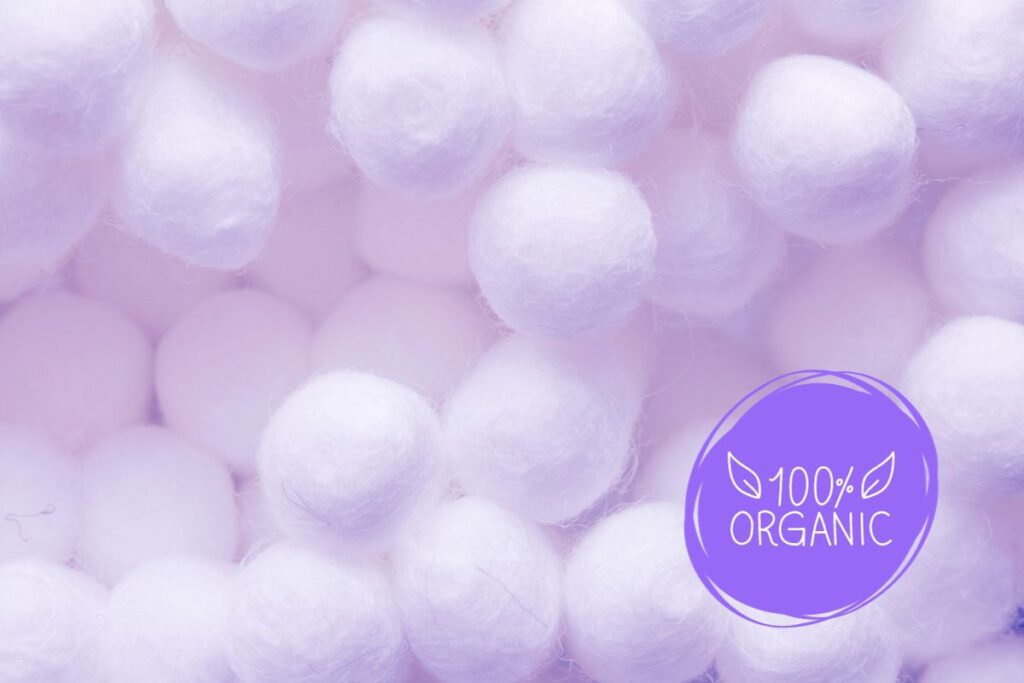Did you know that nearly 35% of adults report inadequate sleep each night? Sleep isn’t just a luxury; it’s a fundamental pillar of our well-being. Imagine waking up feeling refreshed and ready to conquer the day. Now, picture the frustration of tossing and turning night after night. Your choice of what to wear to sleep might be the missing link to a restful night’s sleep. But there’s more to the story than just a good night’s sleep. We’ll uncover the world of sustainable sleepwear – a choice that not only cares for your comfort but also leaves a positive footprint on the planet. Intrigued? Let’s dive in!
In this guide, we will explore the importance of selecting the right fabric for your sleepwear and delve into the health benefits associated with different materials. Furthermore, we will discuss the rising popularity of sustainable and eco-friendly sleeping clothes, emphasizing the positive impact they have on both the environment and your sleep.
Table of Contents
Choosing the Right Fabric
Enter the unsung hero of sleep hygiene – sleepwear. Beyond being a mere wardrobe choice, the right sleepwear significantly contributes to creating an optimal sleep environment. Research shows that what to wear to sleep can impact skin health, with natural fabrics being less irritating for sensitive skin than synthetic ones. The comfort, breathability, and texture of sleepwear have an impact on our ability to relax, helping us to transition from the demands of the day to a state of tranquility conducive to sleep.
Choosing what to wear to sleep is critical since tight clothing can restrict blood flow and interfere with the body’s natural overnight healing process. Studies suggest that what to wear to sleep, such as lightweight pajamas or even nothing at all, can help keep your body at an optimal temperature for deep sleep. In this sense, when it comes to sleepwear, the fabric you choose plays a crucial role in determining your comfort and the quality of your sleep. Here, we’ll discuss some of the most popular fabrics and their unique properties:
Sweet dreams are made of comfy pIllows, soft blankets, and sleepwear that feels lIke a hug. Embrace the nIght and let the magIc happen
1. What to Wear to Sleep: Cotton
- Known for its breathability, cotton is a natural fabric that allows air circulation, keeping you cool during warmer nights.
- Soft and hypoallergenic, cotton is gentle on the skin and ideal for those with sensitive skin or allergies.
- Choosing organic cotton for your sleepwear can bring a multitude of benefits, not only for your personal well-being but also for the environment:
- Reduced Exposure to Harmful Chemicals: Organic cotton is grown without the use of synthetic pesticides, herbicides, and fertilizers.
- Environmental Sustainability: Organic cotton is cultivated using sustainable farming practices that prioritize soil health and biodiversity.
- Healthier Soil and Water Systems: The absence of synthetic pesticides in organic cotton farming allows for healthier soil ecosystems and helps prevent the contamination of nearby water sources.
- Resilience to Pests: Organic cotton is often grown using natural pest control methods and companion planting, fostering a more resilient and diverse ecosystem. It helps to maintain a balance between pests and beneficial organisms in the agricultural landscape.
- High-Quality of Cotton Fiber: The absence of chemical stressors encourages the cotton plant to develop strong and robust fibers naturally. As a result, organic cotton sleepwear becomes softer, more breathable, and comfortable.
- Support for Farmers’ Health: Organic cotton farming, by eschewing harmful chemicals, creates a safer working environment for those involved in the cultivation process.

2. What to Wear to Sleep: Bamboo
- Bamboo fabric is gaining popularity due to its soft and silky feel.
- Naturally antibacterial and moisture-wicking, bamboo helps regulate body temperature, making it suitable for all seasons.
- Choosing natural bamboo sleepwear comes with a myriad of benefits, particularly in terms of sustainability:
- Rapid Growth: Bamboo is one of the fastest-growing plants on the planet, with some species capable of growing up to 91 centimeters (36 inches) in a single day.
- Low Environmental Impact: It thrives naturally with little need for irrigation, pesticides, or fertilizers. The low environmental impact of bamboo cultivation contributes to a reduced carbon footprint, making it an eco-friendly choice for those concerned about sustainable living.
- Supports Soil Health and Prevents Erosion: Bamboo has a unique ability to grow in diverse soil conditions, and its extensive root system helps prevent soil erosion.
- Water-Efficient: Bamboo is water-efficient, requiring significantly less water compared to traditional crops like cotton.
- No Need for Chemicals: Bamboo has a natural resistance to pests and diseases, eliminating the need for chemical pesticides.
- Highly Renewable Long-Term Resource: Due to its continuous growth and the ability to be harvested without uprooting the entire plant, bamboo ensures a sustainable supply for textile production in the long term.
- Remarkable Carbon Sequestration: Bamboo has a remarkable capacity to sequester carbon dioxide from the atmosphere, contributing to efforts to mitigate climate change.
- Versatility of Bamboo Textiles: This includes soft and breathable fabrics suitable for comfortable and stylish sleepwear, all while maintaining a commitment to sustainable and eco-friendly practices.
LIfe Is too short for uncomfortable sleepwear. Snuggle Into somethIng cozy and let your dreams be as sweet as your pajamas
3. What to Wear to Sleep: Silk
- Luxurious and smooth, silk is known for its comfort and elegance.
- Silk’s temperature-regulating properties make it suitable for both warm and cool climates.
- When used in sleepwear, silk emerges as a fabric that can positively impact both the skin and hair:
- Moisture Retention: Silk aids in maintaining the skin’s natural hydration levels, promoting moisture retention during sleep.
- Gentle on the Skin: Silk minimizes friction, reducing the likelihood of irritation, redness, or abrasions.
- Minimized Friction for Healthier Hair: The smooth texture of silk minimizes friction, allowing the hair to glide effortlessly. This contributes to healthier hair by reducing breakage and damage.
- Temperature Regulation: Thanks to its natural breathability, silk helps regulate temperature. It keeps you cool in warmer weather and provides warmth during cooler nights.
- Less Tangling and Bedhead: Silk’s properties also contribute to less tangling, minimizing the likelihood of waking up with unruly bedhead. This can be particularly beneficial for those with longer hair.
- Hypoallergenic Properties: Silk’s hypoallergenic nature reduces the risk of skin irritation during sleep, making it a suitable choice for individuals with sensitive skin or allergies.
- Luxurious Comfort: The luxurious feel of silk enhances overall sleep quality, contributing to a sense of relaxation and well-being. Its smooth and soft texture provides a comfortable sleeping experience.
- Reduced Wrinkles and Fine Lines: Silk’s gentle touch may provide a potential anti-aging benefit by reducing the formation of wrinkles and fine lines. The smooth surface is less likely to cause creases in the skin, contributing to a more youthful appearance.

Health Benefits of Choosing the Right Sleepwear
Adequate sleep is vital for stress relief and overall health. Medical advice emphasizes that what to wear to sleep should be clean and changed regularly, as bacteria and sweat can accumulate and disrupt hygiene. The right sleepwear can contribute to better sleep hygiene, offering several health benefits:
- Improved Sleep Quality: Quality sleep is the cornerstone of overall well-being, and the fabric of your sleepwear plays a pivotal role in ensuring a restful night. The breathability and comfort of the chosen fabric contribute significantly to the enhancement of sleep quality. Fabrics like cotton, bamboo, and silk are known for their breathability, allowing air circulation that helps regulate body temperature. This, in turn, prevents overheating during the night, promoting a comfortable sleep environment. The breathability of these fabrics ensures that you stay cool and cozy, fostering uninterrupted sleep cycles and contributing to a deeper, more rejuvenating rest.
- Skin Health:For individuals with sensitive skin or skin conditions, the choice of sleepwear fabric becomes paramount in maintaining skin health. Opting for hypoallergenic fabrics, such as organic cotton, silk and bamboo, can be a game-changer. These fabrics are naturally resistant to allergens and irritants, reducing the risk of skin reactions. The absence of harsh chemicals and synthetic additives in hypoallergenic fabrics minimizes the potential for skin irritation, making them an ideal choice for those with sensitive skin or conditions like eczema. By choosing sleepwear crafted from hypoallergenic materials, you create a gentle, protective barrier for your skin, contributing to overall skin health and comfort.
- Temperature Regulation: Temperature regulation is a key factor in achieving a comfortable sleep environment. Fabrics with temperature-regulating properties, such as bamboo and silk, adapt to your body’s temperature needs. During warmer nights, these fabrics wick away moisture, keeping you cool and dry. In colder temperatures, they provide insulation, retaining body heat for warmth. This adaptability ensures that you remain in the optimal temperature range for sleep, preventing disruptions caused by discomfort. By investing in sleepwear crafted from temperature-regulating fabrics, you create a conducive atmosphere for quality sleep, allowing you to wake up feeling refreshed and ready to face the day.
- Emotional Impact: The emotional connection to sleepwear plays a role in creating a bedtime ritual that signals to the body and mind that it’s time to unwind. The simple act of slipping into comfortable sleepwear becomes a self-care practice, fostering a sense of security and relaxation.
Sustainable and Eco-Friendly Sleepwear
As the world becomes increasingly conscious of the environmental consequences of consumer choices, sustainable and eco-friendly sleepwear has emerged as a conscientious option for those seeking comfort without compromising the health of our planet. This paradigm shift is reflected in the rising popularity of sleepwear made from organic cotton and bamboo, materials celebrated for their eco-friendly attributes.
Beyond the choice of materials, the sustainability of sleepwear is also closely tied to ethical manufacturing practices. Ethical manufacturing encompasses fair wages, safe working conditions, and transparency throughout the supply chain. Supporting brands that prioritize these principles sends a clear message that consumers value not only the product itself but also the ethical considerations that go into its creation.
Conclusion: What to Wear to Sleep
Sleep Is the golden chaIn that tIes our health and bodIes together. Make It sparkle wIth the rIght sleepwear
In conclusion, the fabric of your sleepwear is not just a matter of personal preference; it directly influences the quality of your sleep and the health of your skin. What to wear to sleep matters because loose, breathable fabrics like cotton or bamboo can help regulate body temperature and improve sleep quality. Embracing breathable fabrics enhances sleep quality, hypoallergenic materials cater to sensitive skin, and temperature-regulating fabrics create a harmonious sleep environment. Making informed choices in sleepwear contributes not only to comfort but also to the overall well-being of both your skin and your sleep patterns.
Moreover, the use of silk in sleepwear goes beyond mere fashion preferences, offering tangible benefits for both the skin and hair. On the other hand, by opting for fabrics like organic cotton and bamboo, you not only prioritize your health and personal comfort but also contribute to a more sustainable and eco-friendly future. Remember, a good night’s sleep begins with the right sleepwear.

